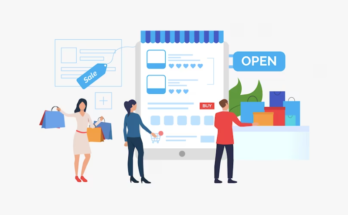Technology is forever changing and evolving, and the same reigns true for website design trends. Many website features and design elements, which were once innovative and modern, are now clichéd, boring and overdone. The one thing you want to avoid, is the loss of revenue, due to people leaving your site because of its dated look or its ignoring of current web standards.
This is why this article was put together, as it covers the latest in development and web design trends. Information that you should be able to use to develop, easy to use, fully functional websites that will perform optimally. So continue reading for the latest and current innovations, forecasts, web standards and technology trends.
Here are 7 top web design trends that you need to follow
1. Speed Is King
Probably the most important or at least, amongst the most important web design standards is the speed in which it takes to load. Over the past couple of years, site loading times has established itself as an essential factor in SEO and UX, and it continues to be prioritised for website that wish to convert and rank well in the search engines.
Research has shown that over 50% of internet surfers expect the website they click on to load up in no more than two seconds. If the site takes more than 3 seconds, then people will start to lose interest, many of which will even consider leaving the website.
The performance of a website, can in many instances impact a company’s bottom line. The ability to reduce the amount of time a user has to wait, before a site becomes accessible, can have a significant impact on search engine visibility, conversions and sign ups.
The loading times of any website is a standard metric that should factor in any website, especially if good user experience is a priority.
2. Use of Bot and AI
Most technologies today have evolved and become smart, like smart TVs, Smartphones, Smart watches etc. For this reason, you should also lean towards having a website that is smart. Technologies such as artificial intelligence, machine learning and augmented reality are here to make your website more user friendly.
This technology can help designers and developers to create personalised and targeted web pages for a user based on their search history, demographics, age, etc. These websites can be designed in such a way that it becomes intuitive and interact for the user.
3. White Space
The blank areas around the different elements on your website are referred to as white space or negative space. White space is designed to create a contrast between the different elements, to make the site appear more balanced. Just because it’s referred to as white space, it doesn’t mean the blank areas must be white, you can choose any colour, just as long as it creates the same effect, its fine.
White space will help the user to be able to focus on the content on the site, making the website appear neat and tidy. For a minimalistic design, the fundamental aspect of it, is the utilisation of white space on the site. When used effectively, white space can make a site look uncluttered, simple and balanced.
4. Smart Content Load
A lot of webmasters may be guilty of having a site that is resource heavy, with many graphical elements, and integrations, that can make the site much slower. Fortunately, there are ways around this, by developing a smart website, which only loads the content that the viewer is looking at, at the time.
Infinite scroll and lazy loading have been around for quite some time now. The major social media sites have been using them for years, especially infinite scroll. This approach is very popular for long one page websites.
A web designer should look at how implementing one of two smart technologies can help their site outperform or outrank their competitors. These features are designed to help improve site UX for everyone who ventures onto the site, which in turn should help improve rankings and conversions.
With lazy load, you can ensure that the web browser will only download the content that is visible on the screen. This means valuable server resources are not wasted, loading content that may never be viewed. This also makes the site faster in the long term.
A large percentage of site viewers, never venture to the bottom of the pages that they visit. Why load that specific content, which would only end up making the site slower. The best approach is to load just the content that they see, as they begin to scroll down the page.
5. Voice Interface
With voice user interface, this allows the user to interact with a website via voice commands, this technology is most ideal for people who have physical disabilities. This is very early technology, and thus a new trend, but we can expect it to become more widespread in the coming years, as more and more businesses adopt it for their websites.
6. Creative Scrolling Experiences
Scrolling is without a doubt the most common type of engagement that a user will make with a website. Because of this, it makes for the perfect opportunity for interactive feedback. For years to come, we can expect the experience of scrolling to be bigger and better, with more innovation and creativity in designers approach to it.
As different scrolling aminations have been around for some time now, the objective is for the designer to surprise the viewer with originality. Today, we are seeing websites that literally transform to living, breathing worlds, with parallax effects, psychedelic imagery, and even third dimension breakthroughs.
These animations get more psychedelic and detailed, with many designers choosing to include foreground elements, in order to draw the user’s eye, which could be to a specific image, such as a crystal or stone. With this implementation, as the animated scrolling helps to entice them to move to the bottom of the page, the foreground imagery ensures they don’t get lost in all of it.
7. Chabot’s becoming More Human
Chat bots have also been around for many years, but have continued and will continue to become popular for the next couple of years to come. As machine learning and artificial intelligence becomes more sophisticated, we should start to witness chat bots becoming more of the norm as customer service representatives and happy shopper guides/assistants.
For example, if a potential customer was to visit your page, looking for contact information for your business, they could acquire said information from a chat bot, simply by typing the query into it. The end result is a positive experience for the user and money saved, from the associated costs of having a live person do it.
AUTHOR INFO
Uchenna Ani-Okoye is a former IT Manager who now runs his own computer support website https://www.compuchenna.co.uk
Guest Post Service By www.guestarticlehouse.com




